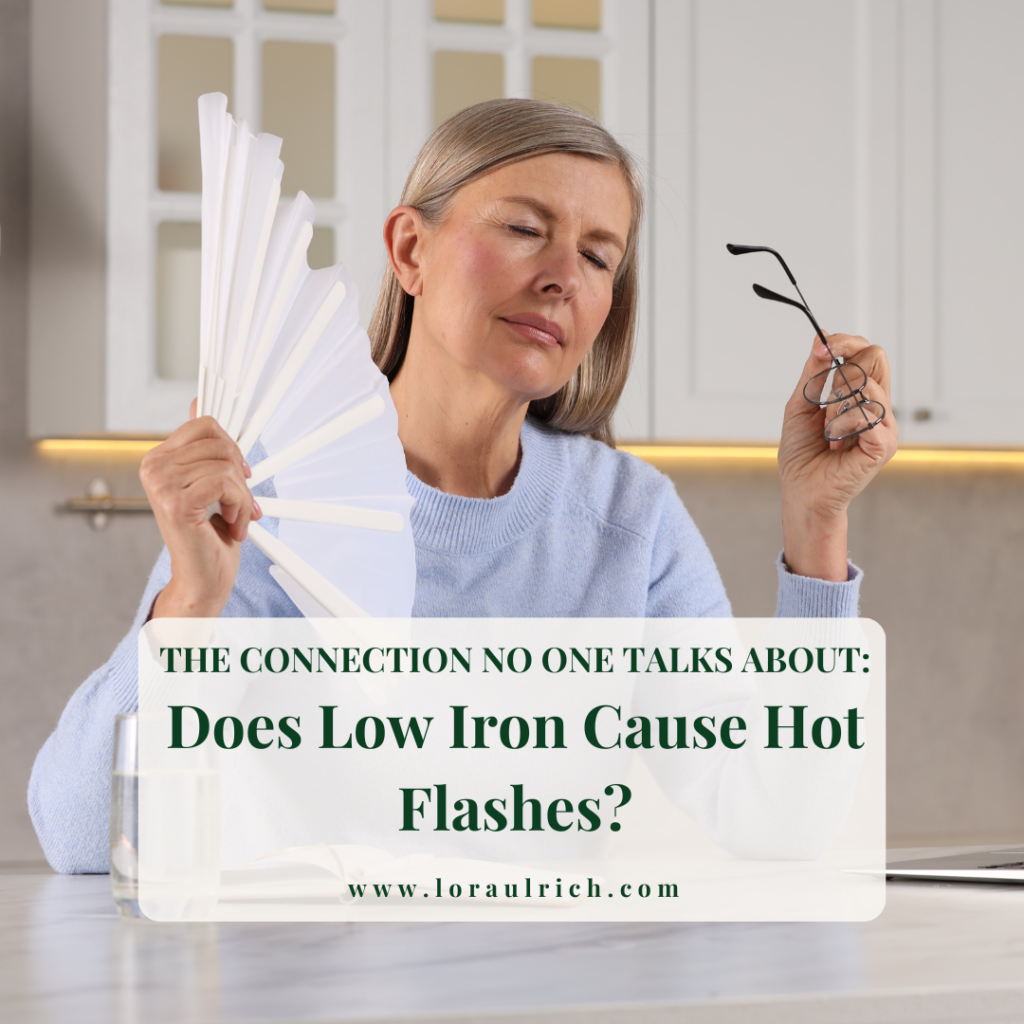Hot flashes are one of those menopause symptoms that everyone talks about, but not always accurately. You’ll hear about estrogen. Maybe stress. Possibly diet. But very few people are talking about how iron levels might be playing a role in how intense or frequent those hot flashes feel.
Let’s change that. Because if you’re in your 40s or 50s, constantly feeling overheated, flushed, or just not right – and your labs keep coming back “normal” – iron might be the missing piece of the puzzle.
What Are Hot Flashes, Really?
Hot flashes aren’t just a feeling of being warm. They’re a sudden surge of heat that starts from the chest or face and radiates outward, often accompanied by sweating, flushing, and even heart palpitations.
They’re linked to a drop in estrogen during perimenopause and menopause, but estrogen isn’t the only thing regulating your temperature. Your nervous system and blood vessels play a huge role… and that’s where iron starts to enter the conversation.
Source: Mayo Clinic

The Role of Iron in the Body (And Why Women Need More Than They Think)
Iron is more than just “energy” – it’s a key mineral your body uses to:
- Transport oxygen through the blood
- Support mitochondrial (aka: cellular) function
- Regulate your internal thermostat
And here’s the kicker: women are more prone to iron deficiency due to years of menstruation, gut absorption issues, and dietary gaps. Even once your period stops, low iron stores from decades past don’t automatically bounce back.
Source: PubMed Central
What a Study Say: Can Low Iron Cause Hot Flashes?
When it comes to the iron-hot flash connection, the research paints a nuanced picture – and that’s exactly why it’s often overlooked.
A study published in the American Journal of Epidemiology looked at ferritin levels (iron storage) in postmenopausal women. What they found was unexpected: women with higher ferritin levels were more likely to experience hot flashes.
So which is it, low iron or too much?
- Low iron may impair your body’s ability to regulate temperature and deliver oxygen efficiently, which can trigger internal heat surges.
- Excess iron, on the other hand, can fuel oxidative stress and inflammation – both of which can heighten menopause symptoms, including hot flashes.
BOTTOM LINE: It’s not about high or low. It’s about balance.
Overlapping Symptoms: Is It Low Iron or Menopause?
This is where it gets messy. Fatigue, dizziness, palpitations, shortness of breath, temperature dysregulation = these are all symptoms of both low iron and perimenopause.
Which means a lot of women get dismissed, misdiagnosed, or told to just “wait it out.”
Your body doesn’t care if your iron level is technically “normal.” If it’s suboptimal for your physiology, you will feel it.
How To Tell If Low Iron Could be a Factor for You
Here’s what to do if your spidey senses are going off:
Test wisely, ask for a full iron panel, not just ferritin. You want:
- Ferritin
- Serum iron
- Iron saturation
- TIBC (Total Iron Binding Capacity)
Understand your results – many women feel best with ferritin between 50-100 ng/mL (not the standard “12 and up” that many labs use).
Look at your symptom picture – are you cold, tired, foggy, lightheaded? Iron could be in play.
Source: PubMed Central
What You Can Do About It
You don’t need to panic – but you do need a plan.
- Start with food
Iron-rich foods like liver, shellfish, and lentils (with vitamin C!) can support healthy levels. Just know that plant-based sources are harder to absorb. - Don’t supplement blindly
Iron overload is real. Only supplement if your labs (and a qualified practitioner) say it’s needed, and always pair with gut support. - Work with someone who sees the full picture
You deserve more than “Your labs look fine.” You deserve to feel like you again.
The Bottom Line: It’s Not Just Hormones
Your hot flashes aren’t random. They’re signals from your body. And while estrogen matters, it’s not the whole story.
If you’re doing all the “right” things and still feeling off – iron may be the connection no one’s talked to you about.
Want Help Figuring This Out?
If your symptoms don’t make sense, you’re tired of being told “everything’s normal,” let’s talk.
I offer a free 15-minute consultation where we can look at your big picture, not just one lab marker.
You don’t need to guess anymore.
Book your complimentary 15-minute breakthrough session below, and let’s find out what’s actually going on in your body.
FAQs: Does Low Iron Cause Hot Flashes?
Low iron and imbalances in estrogen can contribute to hot flashes during menopause.
Fatigue, dizziness, palpitations, shortness of breath, and temperature dysregulation.
Iron helps regulate body temperature, and low iron can worsen hot flashes, but balance is key.
Yes, low iron (which affects blood oxygen transport) can impair temperature regulation and contribute to hot flashes.
Read Next: Does Collagen Help with Hot Flashes?
Are you feeling the heat from menopause and curious about natural remedies? In this article, we’ll address the question: Does Collagen Help with Hot Flashes?
We’ll explore the benefits of collagen and introduce you to my top supplement recommendations for managing hot flashes during perimenopause and menopause

+ show Comments
- Hide Comments
add a comment